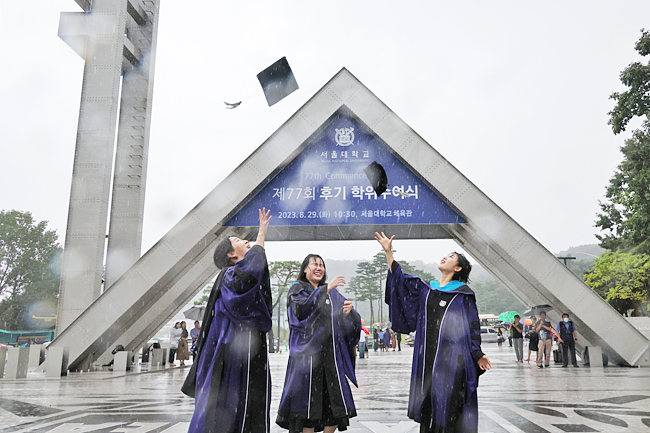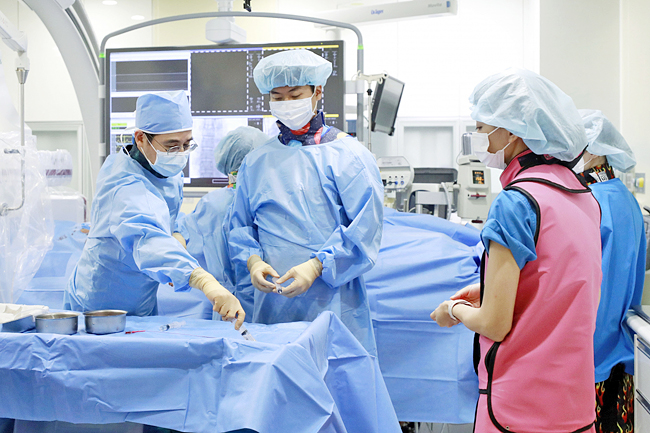ANN/THE KOREA HERALD – College entrance exam academy Jongno Hagwon recently unveiled its analysis of official state education data. The analysis revealed that over the past five years, a staggering 2,131 students chose to discontinue their studies at Seoul National University (SNU), Korea University, and Yonsei University.
These three institutions are widely recognised as the apex of tertiary education in South Korea. Moreover, supplementary data compiled by SNU and made public in May disclosed that 6.2 per cent of this year’s incoming freshman class, totalling 3,606 students, decided to take a leave of absence immediately after commencing their studies.
Private education experts believe that such a phenomenon is caused by students who, after being accepted at top universities, prepare to take the college entrance exam again.
“A leave of absence right after entering SNU, the top Korean school, appears to be an attempt to get admitted to colleges of medicine, dentistry or oriental medicine, which require higher grades,” said Lee Man-ki of the Uway Educational Assessment Research Institute.
As doctors are well-paid and have social prestige in most countries, becoming one is highly sought after across the world. But preference for the profession is even more pronounced in South Korea, where the cut-off score for Suneung – the college scholastic ability test – for medical schools far surpasses those required for nonmedical departments at the country’s top higher education institutes.
Authorities have been working to tackle the issue for years, with no tangible results to show as of yet.
HYPERCOMPETITIVE MED SCHOOL RACE
The course of study for a medical degree differs for each country, and the one in South Korea has undergone several reforms and changes entailing complications. But the gist of it is that to be a qualified physician, one needs to complete a six-year course that encompasses an undergraduate education, preclinical studies and practical training – for which a high Suneung score is crucial to gain entry.
As such, it takes top grades to enter medical colleges here.
The data from Jongno Hagwon showed that to be accepted to the lowest-ranking medical college in South Korea, one needed to achieve a percentile rank of 97.7, indicating that they had to outperform 97.7 per cent of the students who took the Suneung exam. This requirement is notably higher than the cutoff for non-medical SNU colleges, which stands at 94.3 per cent.


Non-medical colleges are categorised into two main categories: the first being science, technology, engineering and math – commonly known as STEM – and the second being liberal arts which includes law, business management and various other humanities fields.
To actually be accepted at the prestigious SNU College of Medicine, one needs 99.2 – meaning one would have to be in the 0.8 per cent of everyone who applied for college admission this year.
Very roughly put, it is harder to get into the lowest-ranking medical school than to be accepted at the highest-ranking non-medical college, at least in the aforementioned STEM fields of study.
The number of older applicants are on the rise as well. According to the Korean Educational Development Institute, 582 people aged 26 or older were accepted to medical colleges in 2021, compared to 130 in 2017.
Earlier this year, the story of a man surnamed Gwak who got into medical school at the age of 45 went viral on YouTube. “When my daughter was born after I turned 41, I began worrying about money,” Gwak, an SNU graduate who worked at a major corporation for 17 years, said in the video.
He said he needed a job where he could work for a long time without having to worry about the retirement age set by the corporation where he worked.
Former teacher Seong Gwang-jin who heads the private think tank Daejeon Education Institute, claimed that freezing the annual cap on medical college admissions in 2006 is the main culprit for the current situation.
“Average age and incomes have increased in Korean society, as has the demand for medical care. The number of openings at medical schools, on the other hand, has remained the same, which has made the position of doctor the most coveted and highest-earning,” he wrote in a recent column.
Being a doctor is a dream job, apparently even for a man who already has a job.
AUTHORITIES STRUGGLE TO ADDRESS ISSUE
The government is moving in that direction already. Health Minister Cho Kyoo-hong said in June in a National Assembly session that the student quota for medical schools will be increased by 2025, citing a consensus between the government and medical communities.
According to data from the Organization for Economic Cooperation and Development (OECD), South Korea has 2.5 doctors per 1,000 people, considerably fewer than the OECD average of 3.7.
But the problem is the fact that a majority of the country’s most talented students are only focused on getting into medical schools, which leads to a shortage of talent in other fields.
South Korea currently runs a few elite schools devoted to STEM. But statistics show that a considerable number of students in these science schools end up becoming medical students.
Data revealed recently by Kang Deuk-gu of the main opposition Democratic Party of Korea showed that 8.5 per cent of graduates from seven elite high schools established under the Gifted Education Promotion Act went to medical colleges between 2019 and 2021.
This alarmed the Education Ministry, which warned that schools should specify that going to study medicine can result in disadvantages for the students.
Seoul Science High School (SSHS) has specified since 2018 in its recruitment guide that the institute is not suitable for those seeking to go to medical school, and that such students would have to return their scholarship funds as well as forego recommendations for college entrance.
Despite this, nearly a quarter – 23.7 per cent – of SSHS graduates went on to medical colleges in the three years since 2019. The percentage of these science school graduates going to medical colleges are creeping up each year, from 8.5 per cent in 2021 to 9.1 per cent and 9.5 per cent in 2022 and 2023, respectively.
For years, the government had been focusing on what appeared to them a logical solution to the two problems: if an excessive number of students want to attend medical school, and there are calls for more doctors across the country, why don’t medical schools accept more students?
Media reports have surfaced this year suggesting that the South Korean government is seeking to increase the capacity of medical colleges in the country, starting as early as next year.
But the plan is facing severe backlash from some within medical circles.
The Korean Medical Association (KMA) recently held a press conference denying reports that the organisation unilaterally decided to accept the government proposals for expanding admissions to medical colleges, saying the discussion is “just getting started”. The conference was in response to calls from the KMA’s regional branches for the leadership to resign in relation to the said reports.
Another possible solution being presented is establishing a new state-run medical college, which the KMA is also against.
While split on what the solution should be, it is generally agreed that so many students aiming to get into medical school is not an ideal situation.
Last month, the National Assembly Research Service released its report on the 2023 parliamentary audit, which said that a large number of elite students solely aiming to enter medical school is “not good for national competitiveness”.
The report suggested that the government review a plan to increase support for nonmedical STEM students by creating economic incentives, such as boosting salaries for experts in their fields after graduation.
The Ministry of Health and Welfare is slated to hold a meeting with the KMA on September 21 regarding current issues in the medical industry. Eyes are on both parties to see if they can come up with feasible and effective plans to address the overconcentration of talent in medical colleges. – Yoon Min-sik





